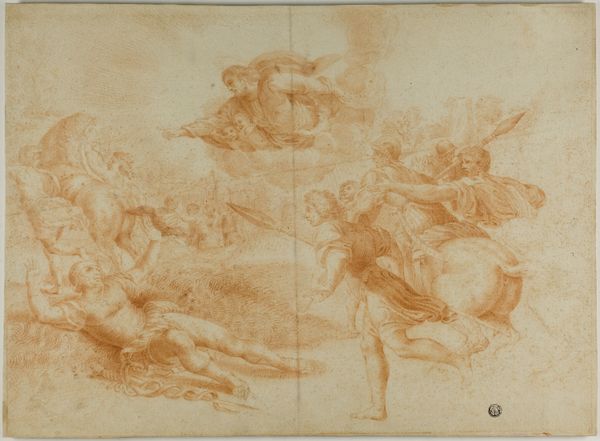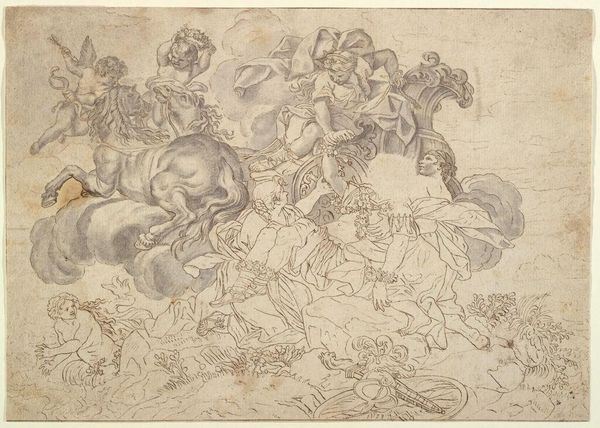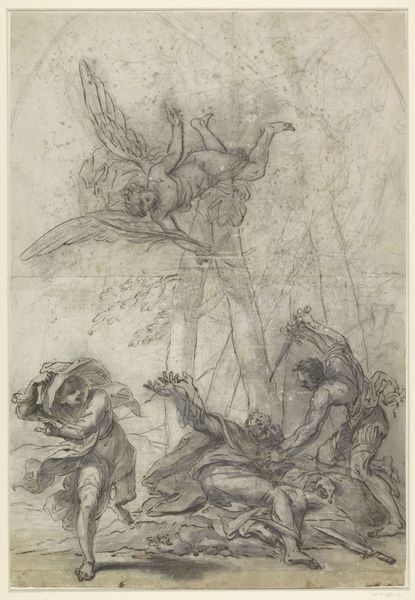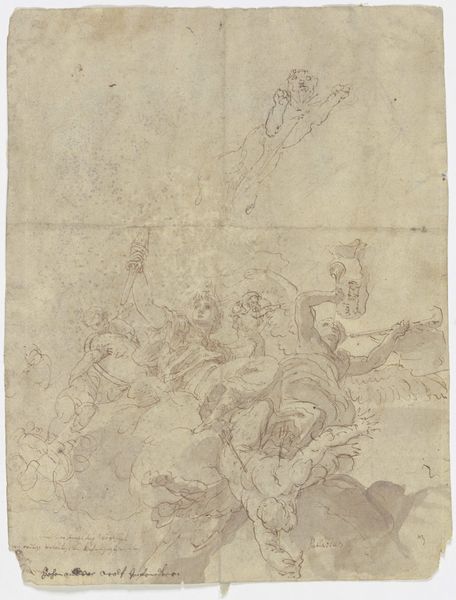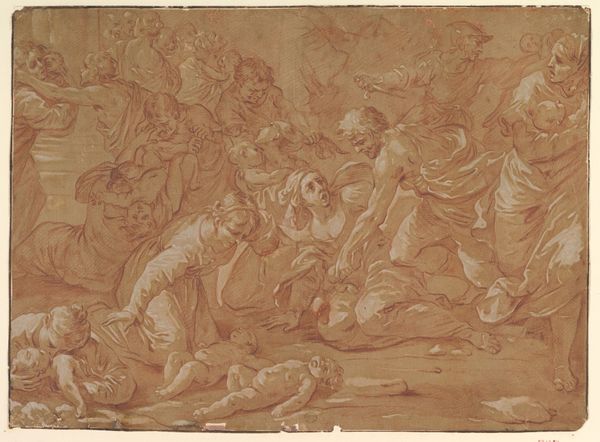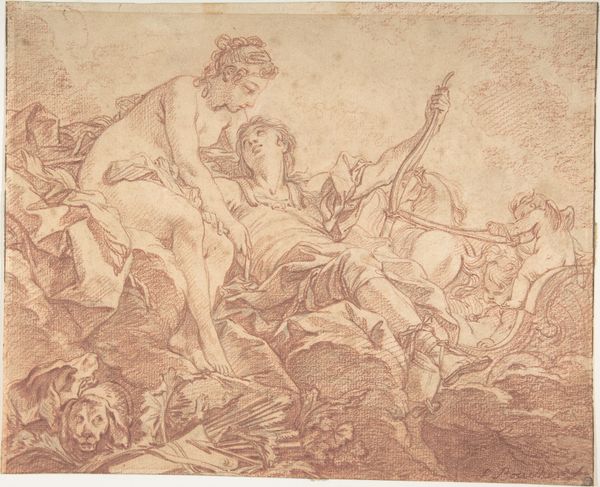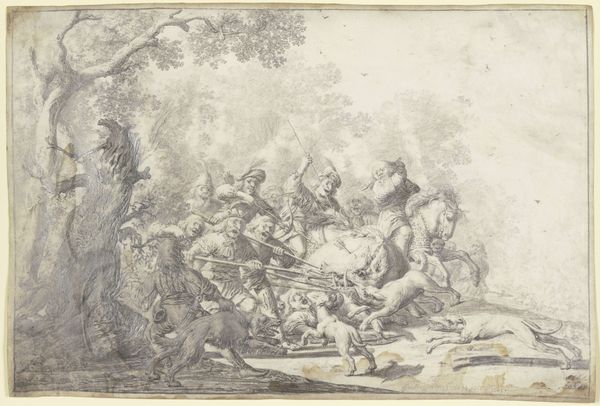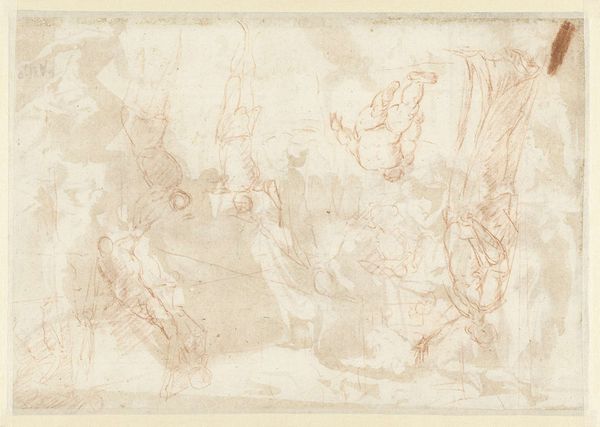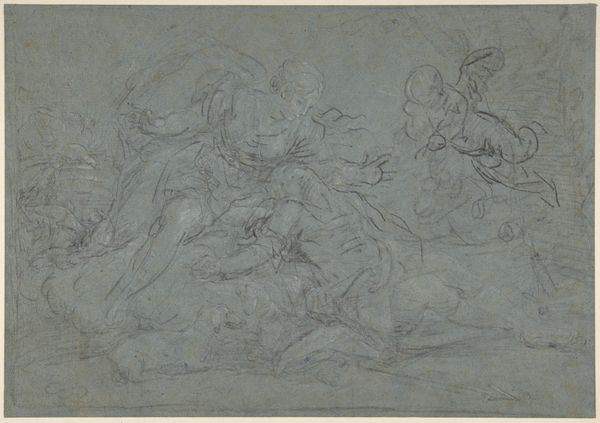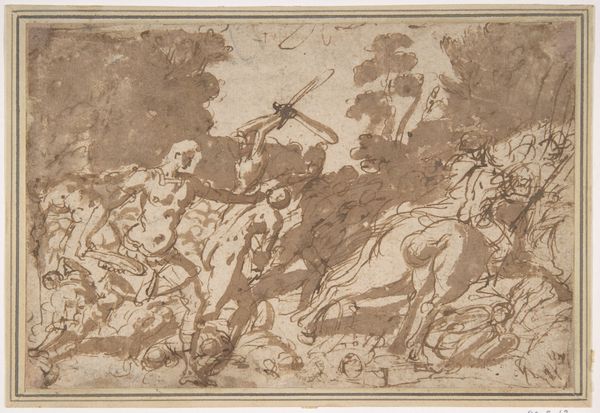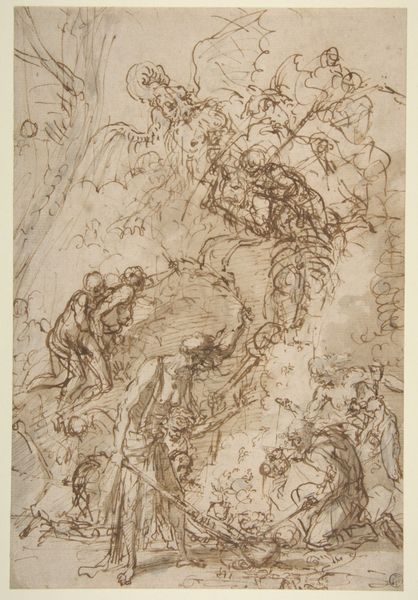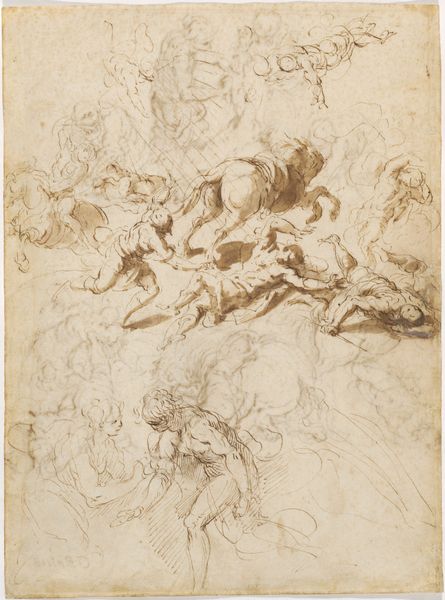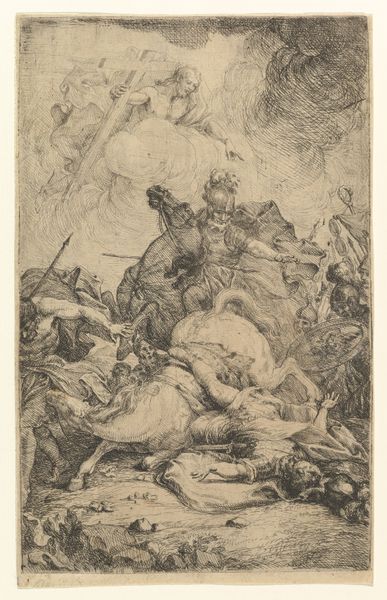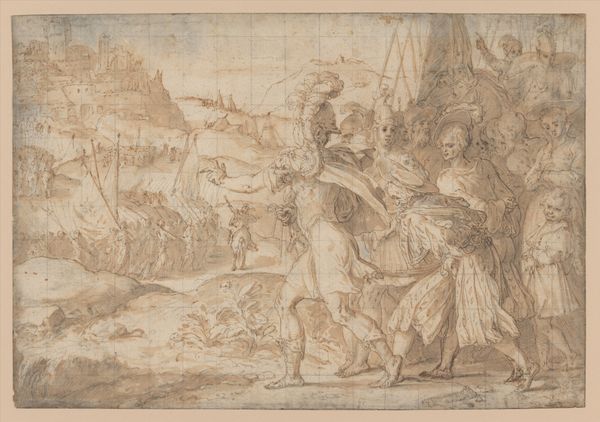
Allegorie op de kroning van Willem III tot koning van Engeland 1689 - 1757
0:00
0:00
drawing, paper, pencil
#
drawing
#
allegory
#
baroque
#
etching
#
paper
#
pencil
#
history-painting
Dimensions: height 535 mm, width 912 mm
Copyright: Rijks Museum: Open Domain
Curator: The way this drawing emerges from the paper gives it a very ethereal quality. What's your initial take on this Allegorie op de kroning van Willem III tot koning van Engeland by Mattheus Terwesten? Editor: It feels celebratory, definitely. There’s a swirling energy, figures ascending and descending… is it the formal crowning of William, or perhaps a symbolic representation of his rise to power? Curator: Given the prevalence of allegorical figures, I lean toward symbolic. We see depictions of abstract concepts of monarchy and statehood rendered using a paper, pencil, and etching. It feels like a visualization of history. Editor: Absolutely. Look at the details. The central figures, adorned with crowns and symbols of authority, seem to be buoyed by clouds, almost floating. This technique distances them from everyday reality, positioning them within the realm of idealized leadership. I’m curious about the figures beneath them; are they symbols of vanquished foes or oppressed peoples liberated? Curator: Perhaps both? Notice the use of light and shadow – a very deliberate deployment, guiding our eye. These symbolic devices, steeped in baroque traditions, evoke universal themes of power, victory, and divine favor. Each motif echoes longstanding narratives and the emotional content surrounding the concept of Kingship. Editor: Considering this was produced between 1689 and 1757, I find myself thinking about the intended audience. What impact would an image like this have, and how would the general populace relate to these symbolic depictions of authority? Were these images mainly destined for elite circles, reinforcing existing power structures, or did they find wider distribution to influence public opinion? Curator: It's that ambiguity that's powerful – a sustained artistic practice designed for multilayered audiences with differing social and political awareness. It encapsulates something of the cultural memory of a nation defining and negotiating its understanding of rule, freedom, and the ideal monarch. Editor: Indeed. It prompts me to consider how representations of power continue to shape and influence societies across time. It's remarkable how art can offer such layered insights into the sociopolitical landscapes of bygone eras. Curator: Precisely, the careful and expert choice of the elements, from paper to line-making, creates a cultural document whose meanings and impacts endure.
Comments
No comments
Be the first to comment and join the conversation on the ultimate creative platform.
